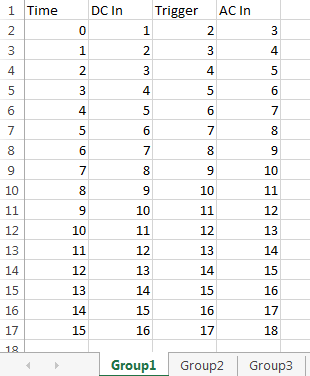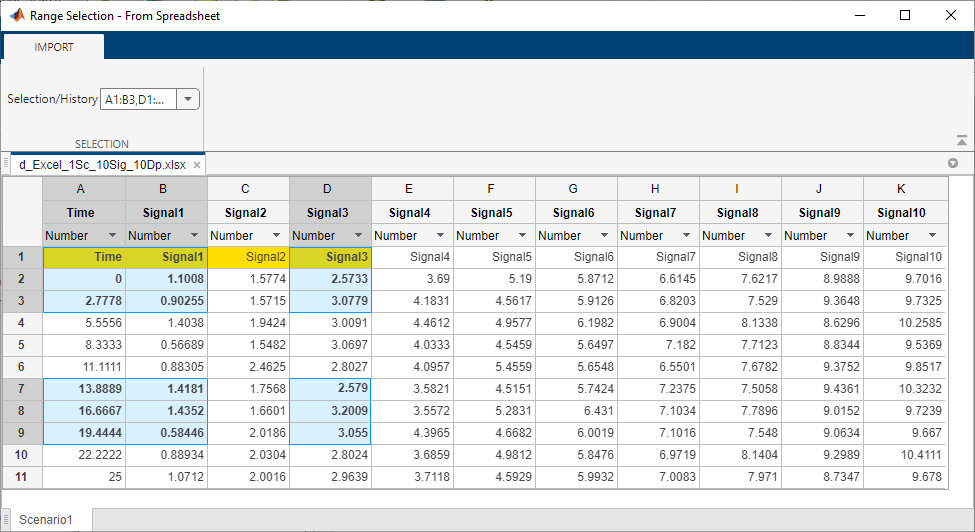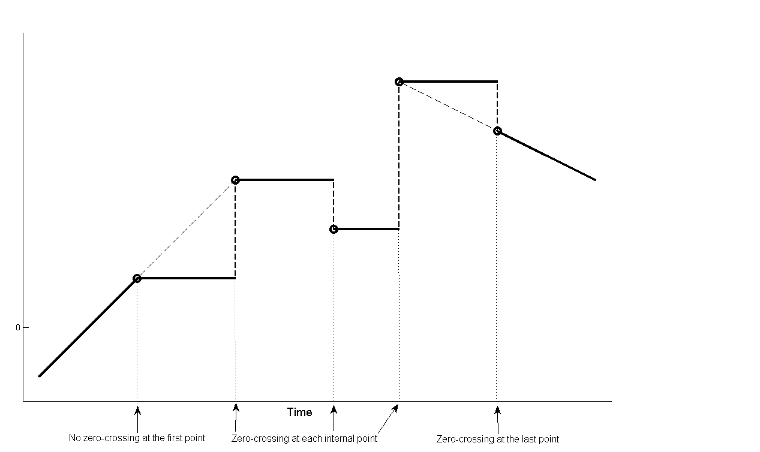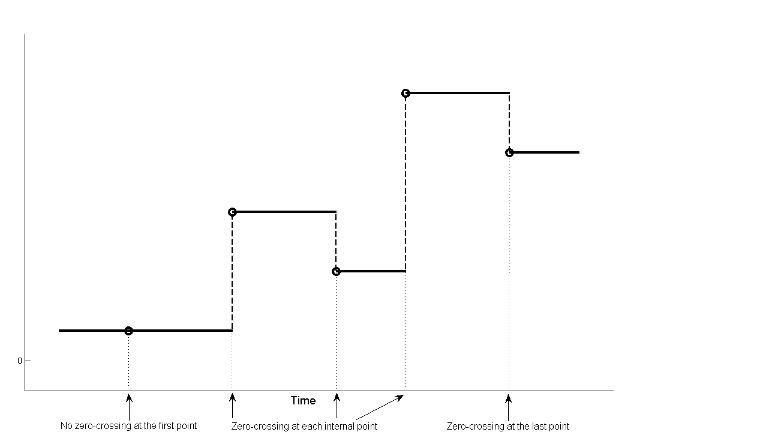From Spreadsheet
从电子表格读取数据
库:
Simulink /
Sources
描述
From Spreadsheet 模块可以从 Microsoft® Excel®(所有平台)或 CSV(仅限安装了 Microsoft Office 的 Microsoft Windows® 平台)电子表格读取数据并将数据输出为信号。From Spreadsheet 模块不支持 Microsoft Excel 电子表格图。
From Spreadsheet 图标显示在模块的文件名和工作表名称参数中指定的电子表格文件名和工作表名称。
存储格式
From Spreadsheet 模块从电子表格中读取的数据必须已适当格式化。
对于 Microsoft Excel 电子表格:
From Spreadsheet 模块将第一行解释为信号名称。如果您不指定信号名称,From Spreadsheet 模块将使用格式
Signal指定默认信号名称,其中##随着每个未命名信号的增加而递增。From Spreadsheet 模块将第一列解释为时间。在此列中,时间值必须是单调递增的。
From Spreadsheet 模块将其余列解释为信号。
以下示例显示了一个可接受格式的 Microsoft Excel 电子表格。第一列是 Time,第一行包含信号名称。每个工作表包含一个组。

对于 CSV 文本文件(仅限安装了 Microsoft Office 的 Microsoft 平台):
From Spreadsheet 模块将第一列解释为时间。在此列中,时间值必须是递增的。
From Spreadsheet 模块将其余列解释为信号。
每个列必须具有相同的条目数。
From Spreadsheet 模块将每个文件解释为一个信号组。
以下示例显示了一个可接受格式的 CSV 文件。内容表示一个信号组。
0,0,0,5,0 1,0,1,5,0 2,0,1,5,0 3,0,1,5,0 4,5,1,5,0 5,5,1,5,0 6,5,1,5,0 7,0,1,5,0 8,0,1,5,1 9,0,1,5,1 10,0,1,5,0
From Spreadsheet 模块不接受非有限数据的信号值,例如 Nan、Inf 或 -Inf。
仿真过程中的模块行为
From Spreadsheet 模块在仿真期间以增量方式从电子表格中读取数据。
采样时间参数指定 From Spreadsheet 模块用来从电子表格中读取数据的采样时间。有关详细信息,请参阅参数。文件中的时间戳必须单调非递减。
对于电子表格中不包含任何匹配时间戳的每个仿真时间点,Simulink® 软件都会使用所选方法进行内插或外插以获得所需数据。有关详细信息,请参阅没有对应电子表格时间戳的仿真时间点。
没有对应电子表格时间戳的仿真时间点
如果仿真时间点没有对应的电子表格时间戳,则 From Spreadsheet 模块输出将取决于:
仿真时间点出现在第一个时间戳之前、时间戳范围内还是最后一个时间戳之后
您选择的内插或外插方法
电子表格数据的数据类型
有关内插和外插选项的详细信息,请参阅下列参数描述:
有时,电子表格包含两个或多个具有相同时间戳的数据值。在这种情况下,From Spreadsheet 模块的操作取决于仿真时间点的出现时间(相对于电子表格中的重复时间戳)。
例如,假设电子表格包含以下数据。三个数据值的时间戳值为 2。
time stamps: 0 1 2 2 2 3 4 data values: 2 3 6 4 9 1 5
下表列出了 From Spreadsheet 模块输出。
| 仿真时间(相对电子表格中的重复时间戳值) | From Spreadsheet 模块操作 |
|---|---|
| 在重复时间戳之前 | 执行与时间戳不同时相同的操作,使用第一个重复时间戳值作为插值的基础。(在此示例中,该时间戳值为 |
| 在重复时间戳当时或之后 | 执行与时间戳不同时相同的操作,使用最后一个重复时间戳值作为插值的基础。(在此示例中,该时间戳值为 |
COM 的读取问题
默认情况下,From Spreadsheet 模块使用 Windows 平台上的组件对象模型 (COM) 接口和其他平台上的 LibXL 库读取电子表格。如果 From Spreadsheet 模块在读取 Windows 上的电子表格时遇到问题,请使用 set_param 函数将 'ReaderLibrary' 设置为 'LibXL'。例如:
set_param(blockPath,‘ReaderLibrary’,‘LibXL’);
其中 blockPath 是模型模块路径。



